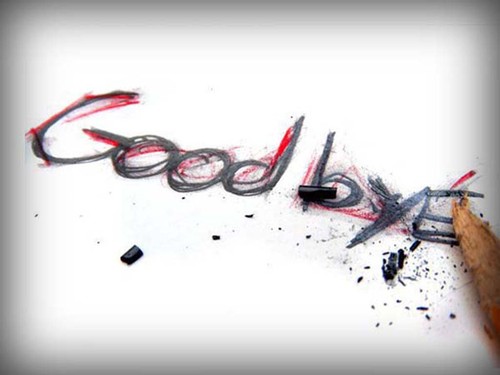Cavorting Continues (Page Four)
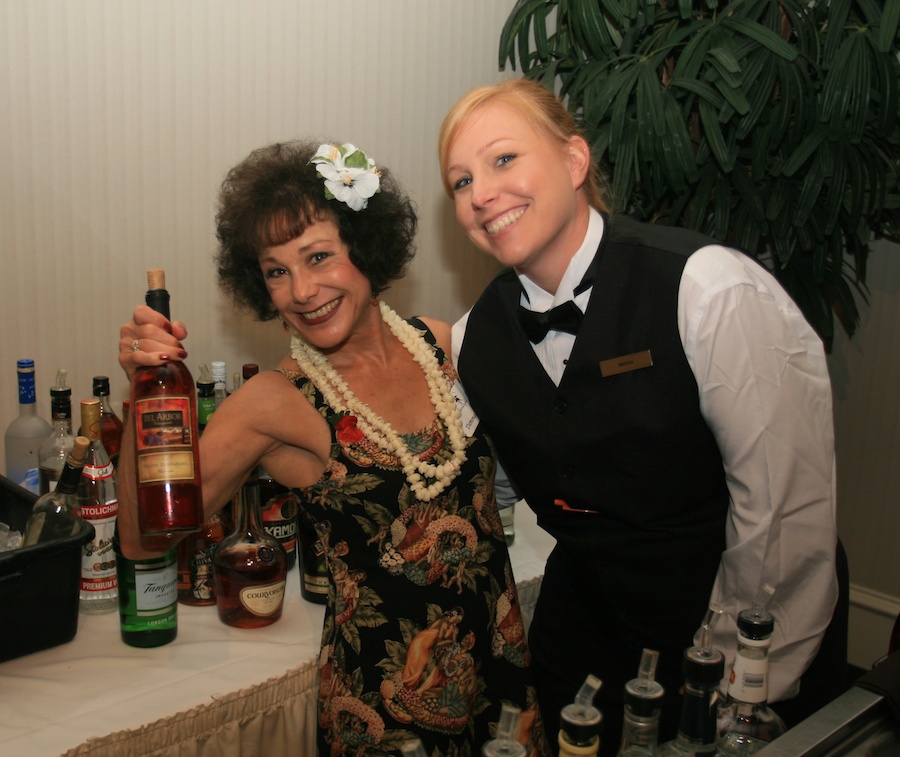
A new found friend.... Indeed
Did You Know? - No alcohol beverage can be over 190% proof (95% alcohol). Because at any higher proof, the beverage will draw moisture from the air and self-dilute.

Time to share

Visiting

The band speeds up and....
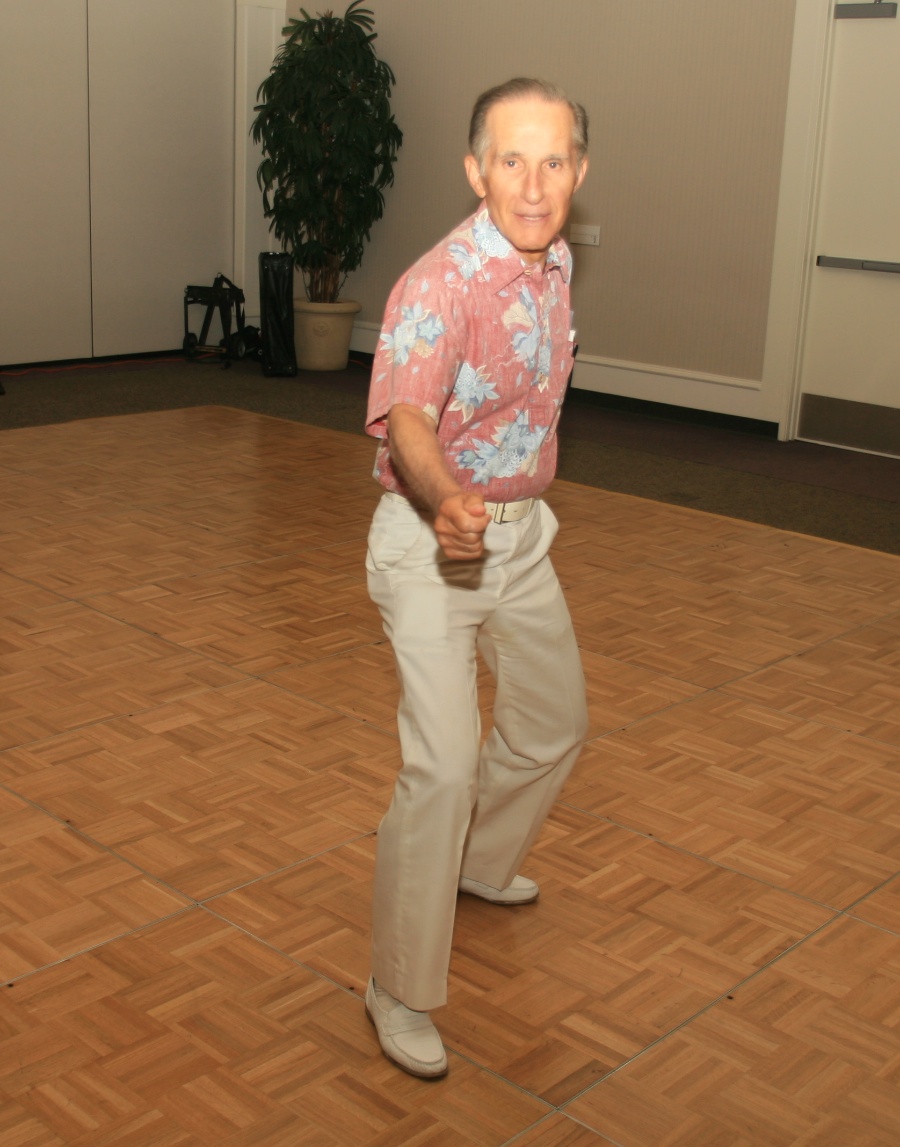
...so does Leon
Did You Know? - The sentence "Pack my box with five dozen liquor jugs" is the same as what typesetters use to include all the letters of the alphabet in one sentence. But our proper English tutors changed it to "The quick brown fox jumps over the lazy dog" while teaching typing.




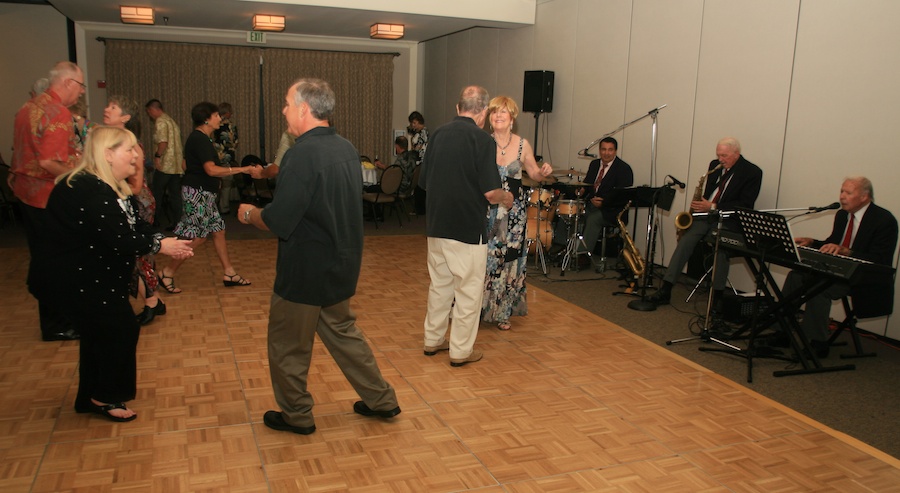

Meanwhile In The Hallway...

Moving..Moving...Moving...
Did You Know? - The can-can (sometimes non-hyphenated as in the original French: cancan[citation needed][original research?]; French pronunciation: [kɑn kɑn]) is a high-energy and physically demanding music hall dance, traditionally performed by a chorus line of female dancers who wear costumes with long skirts, petticoats, and black stockings. The main features of the dance are the lifting and manipulation of the skirts, with high kicking and suggestive, provocative body movements.
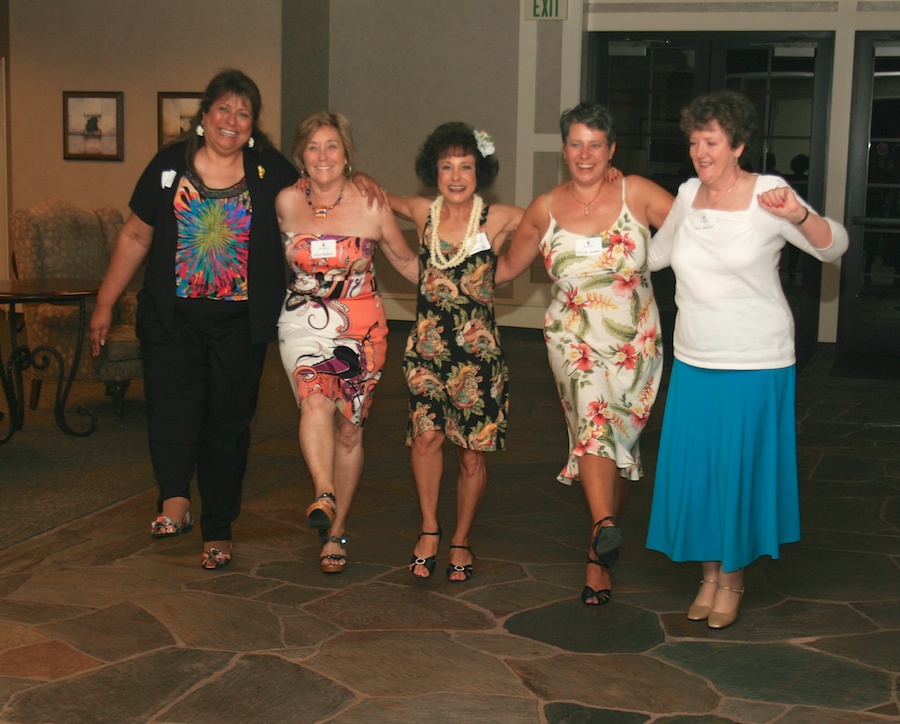
Can Can Ladies
_1895-6.jpg)
Circa 1895

Great fun with great friends
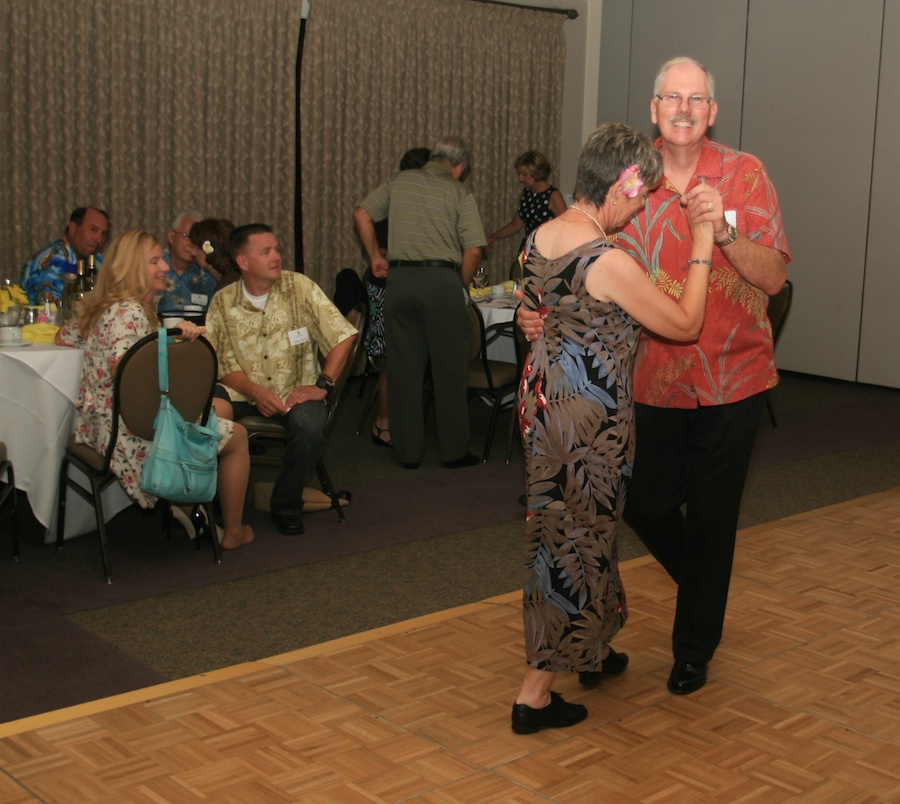
Did You Know? -
- The state of Hawaii consists of eight main islands: Niihau, Kauai, Oahu, Maui, Molokai, Lanai, Kahoolawe and the Big Island of Hawaii.
- Hawaii is the most isolated population center on the face of the earth. Hawaii is 2,390 miles from California; 3,850 miles from Japan; 4,900 miles from China; and 5,280 miles from the Philippines.
- Hawaii is the only state that grows coffee.
- More than one-third of the world's commercial supply of pineapples comes from Hawaii.
- There are only 12 letters in the Hawaiian alphabet.
- Vowels: A, E, I, O, U
- Consonants: H, K, L, M, N, P, W
- From east to west Hawaii is the widest state in the United States.
- The Hawaiian Islands are the projecting tops of the biggest mountain range in the world.
- Honolulu's zenith star, (the star that rises directly above it) is Arcturus. The Hawaiians called it Hokule'a. (Hoe koo lay uh.)
- Under-sea volcanoes that erupted thousands of years ago formed the islands of Hawaii.
- The Hawaiian Archipelago consists of over 130 scattered points of land stretching some 1,600 miles in length from the Kure Atoll in the north to the Island of Hawaii in the south.
- The first Asian American in the United States Senate was Hawaii's Hiram Fong. Descended from Chinese immigrants, Fong was elected to the Senate in 1959.
- Hawaii was the 50th state admitted to the union on August 20th, 1959.
- Island flowers and colors used to represent each island.
- Niihau - Pupu Shell - White
- Kauai - Mokihana (Green Berry) - Purple
- Oahu - Ilima -Yellow
- Maui - Lokelani (Pink Cottage Rose) - Pink
- Molokai - White Kukui Blossom - Green
- Lanai - Kaunaoa (Yellow and Orange Air Plant) - Orange
- Kahoolawe - Hinahina (Beach Heliotrope) - Grey
- Big Island of Hawaii - Lehua Ohia - Red
- Hawaii has its own time zone (Hawaiian Standard Time.) There is no daylight savings time.) The time runs two hours behind Pacific Standard Time and five hours behind Eastern Standard Time.
- There are four counties in Hawaii (Kauai; city and county of Honolulu; Maui; and Hawaii). Each city has a mayor and council in charge.
- All subterranean minerals belong to the state. Except for state owned water, some lava stone, and minor granites and semi-precious minerals, there are few underground minerals.
- The wind blows east to west in Hawaii. The highest recorded temperature is 96' F (Honolulu Airport), but temperatures over 92' F generally occur only once or twice a year. The lowest temperature (under 3000 feet altitude) is 56' F. Temperatures under 60' F may occur but rarely more than once a year. Average daytime temp. (July) is 82' F. Average daytime temperature in January is 72' F.
- There are no racial or ethnic majorities in Hawaii. Everyone is a minority. Caucasians (Haoles) constitute about 34%; Japanese-American about 32%; Filipino-American about 16% and Chinese-American about 5%. It is very difficult to determine racial identification as most of the population has some mixture of ethnicities. ISLAND OF NIIHAU
- A privately owned island, with livestock raising as its principal industry. There is highly limited access by general public through helicopter landings at uninhabited sites. Legend says Niihau was the original home of the goddess Pele. The island has a population of 230, and is 69 square miles. ISLAND OF KAUAI
- The fourth largest of the Hawaiian Islands.
- The Waialua River is one of five navigable river in Hawaii. It drains off Waialeale Mountain, which averages 488 inches of rain per year and is considered the wettest spot on earth.
- The Waimea, the Hanape'pe, the Lumahai and the Hanalei River are almost as big and quite navigable. The Hanalei River was dedicated a "national treasure" recently and is under government protection from use as a "place of business". ISLAND OF OAHU
- Honolulu is the largest city in the world -- at least it has the longest borders. According to the state constitution any island (or islet) not named as belonging to a county belongs to Honolulu. This makes all islands within the Hawaiian Archipelago, that stretch to Midway Island (1,500 miles northwest of Hawaii) part of Honolulu. Honolulu is about 1,500 miles long or more distance than halfway across the 48 contiguous states.
- Wai Golf Course is Hawaii's first municipal course.
- Honolulu is the nation's 11th largest metropolitan area.
- More than 100 world-renowned beaches ring Honolulu.
- Iolani Palace is the only royal palace in the United States.
- The world's largest wind generator is on the island of Oahu. The windmill has two blades 400 feet long on the top of a tower twenty stories high.
- The island of Oahu draws more visitors than any other to Hawaii. One-third of the state's best surfing beaches are on Oahu. ISLAND OF MAUI
- The island is home to many famous attractions including Haleakala Crater, the old whaling town of Lahaina, the road to Hana, and Kaanapali Beach.
- Haleakala Crater (Ha-lay-ah-ja-lah), is the world's largest dormant volcano. ISLAND OF MOLOKAI
- Molokai is known as the most Hawaiian Isle.
- Molokai's east end is a tropical rain forest and part of the island receives 240 inches of rainfall a year.
- Molokai Ranch Wildlife Park is home to rare African and Indian animals.
- Kalaaupapa was once a leper colony administered by Father Damien.
- The island contains the world's highest sea cliffs, Hawaii's longest waterfall, and the largest white sand beach in the state. ISLAND OF LANAI
- The island of Lanai is considered Hawaii's most secluded.
- The island was once the home of the world's largest pineapple plantations.
- Hulope Bay is a marine preserve and considered one of the best diving spots in the world. ISLAND OF KAHOOLAWE
- Once used as a target by the U.S. Navy and Air Force the services are cleaning up unexploded shells. No one is allowed to go ashore without permission. The island consists of an uninhabited area of 45 square miles. THE BIG ISLAND OF HAWAII
- The Big Island is Hawaii's largest at 4,038 square miles. It is twice the size of all other Hawaiian Islands combined.
- The largest contiguous ranch, in the United States, is in Hawaii. The Parker Ranch near Kamuela has about 480,000 acres of land.
- At 800,000 years the Big Island is the youngest of the island chain. However, it was the first island discovered by voyaging Polynesians.
- Kilauea volcano is the world's most active.
- Ka Lae is the southernmost point in the United States. It is located at 18:54:49 N 155:41:00 W. There is a constant 27 knots per hour wind blowing east to west, 24 hours per day and 365 days per year.
- Two of the tallest mountains in the Pacific - Mauna Kea and Mauna Loa - dominate the center of the island. Most of the world's macadamia nuts are grown on the island.
- Kilauea Iki is the world's most active and largest volcano.
- Mauna Kea is the tallest mountain in the world (measured from its base at the ocean floor).
- The island houses the world's biggest telescope and more scientific observatories in one place than anywhere else in the world.
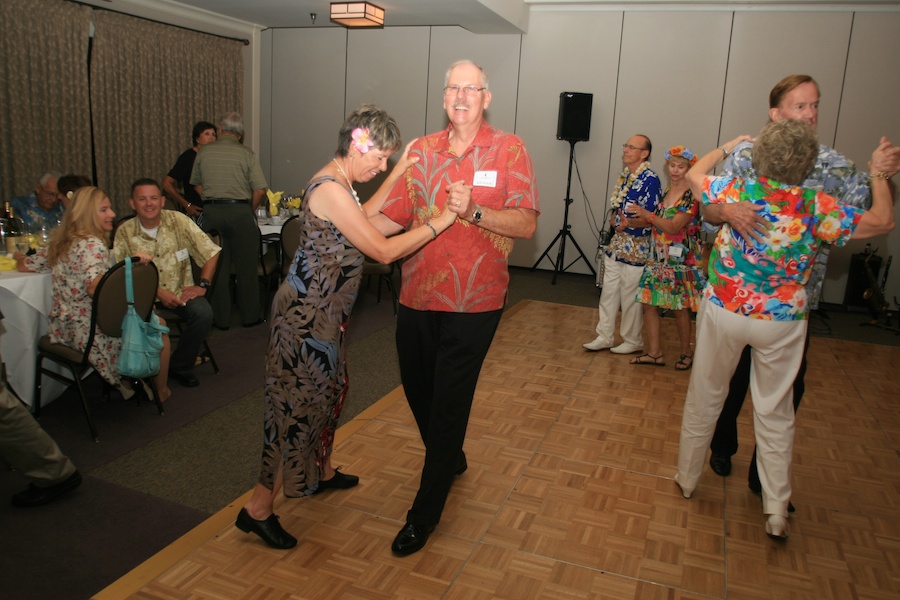
Paul & Barbara Have Danced Before
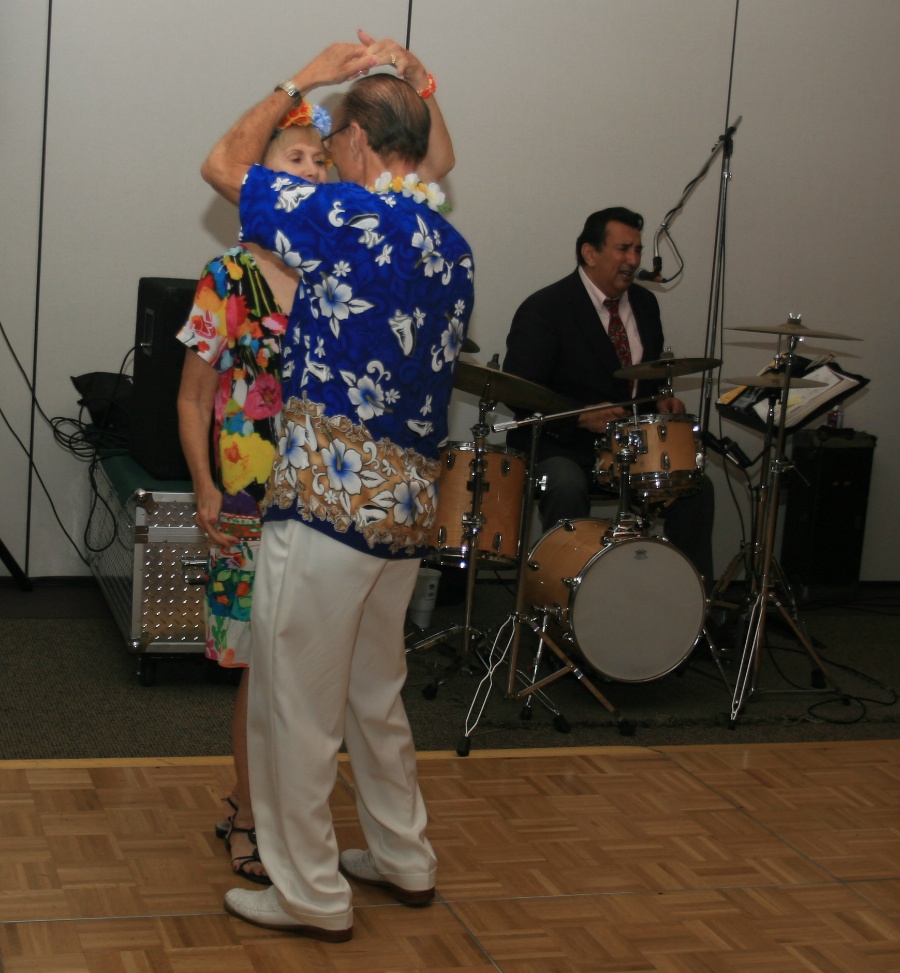
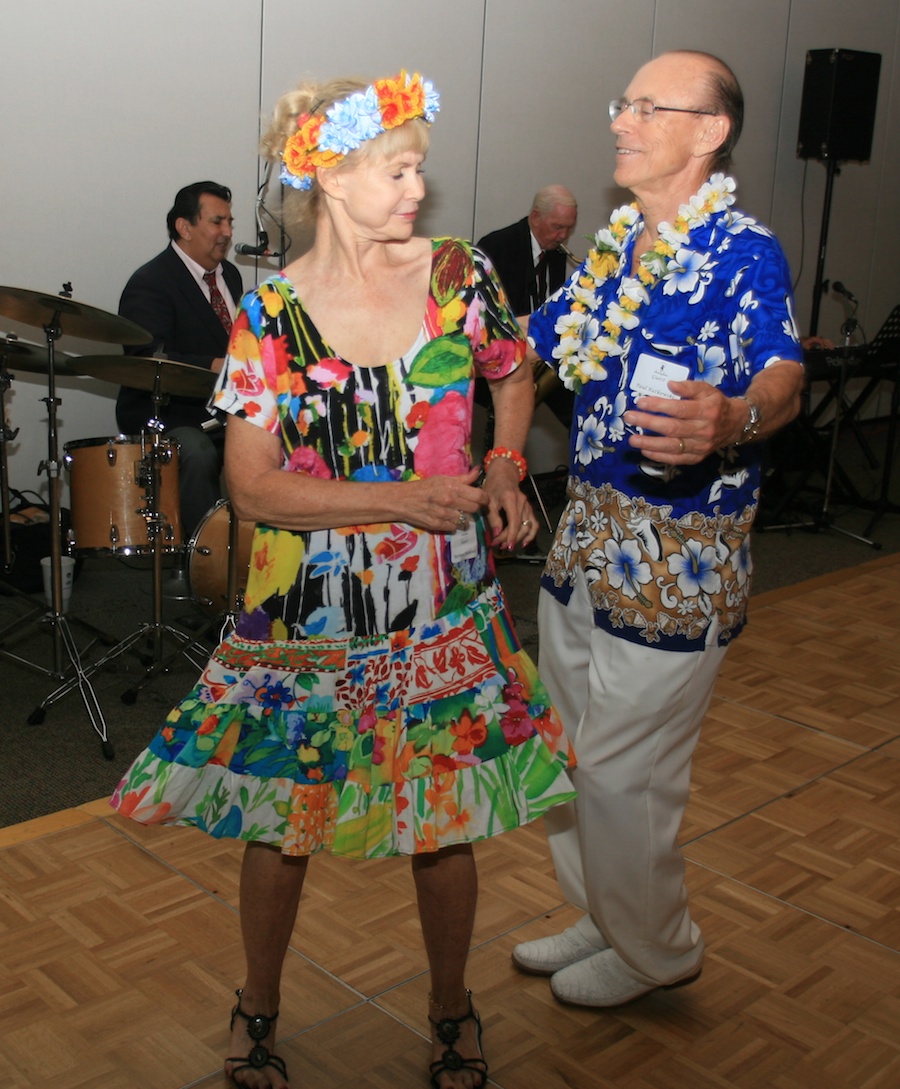


Let The Dancing Continue
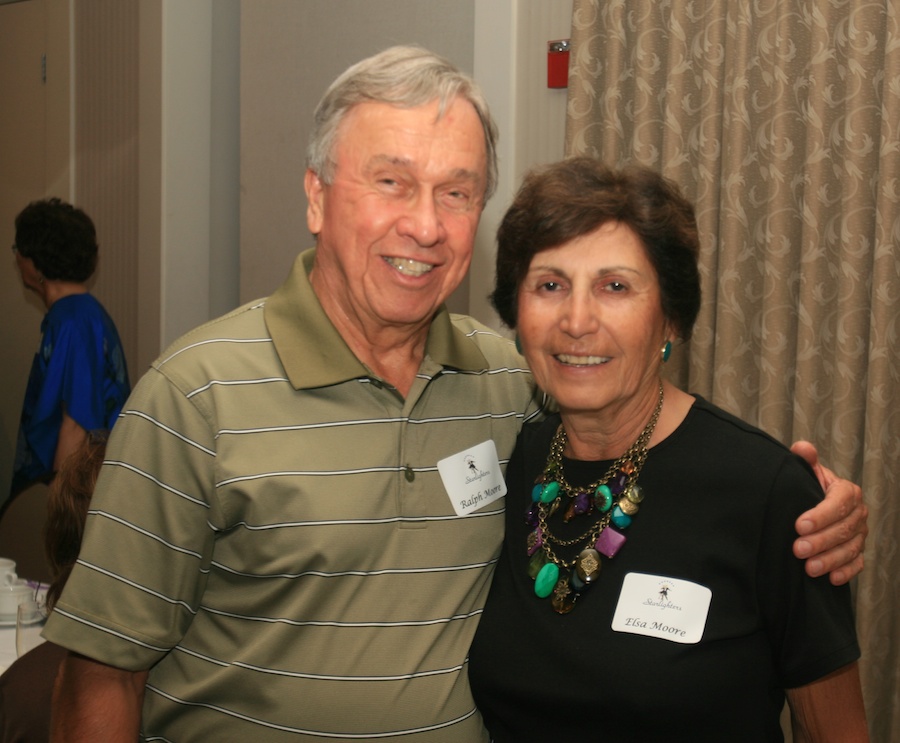
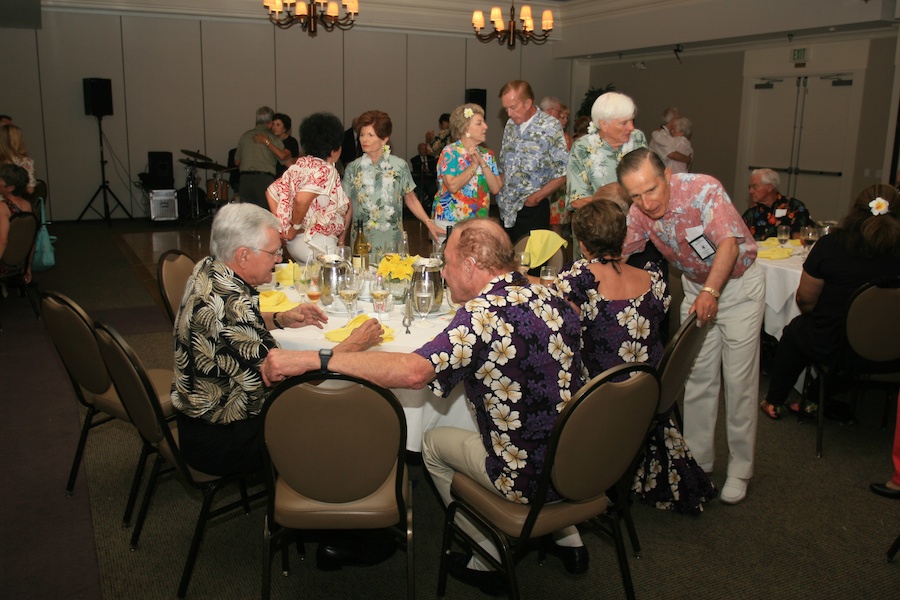
Hawaiian shirts rules the evening
Did You Know? - After World War II, many servicemen and servicewomen returned to the United States from Asia and the Pacific islands with aloha shirts that had been made in Hawaii since the 1930s.[3] Tourists began flocking to Hawaii in the 1950s as faster airplanes allowed for easier travel and the former U.S. territory became a state in 1959.
Alfred Shaheen, a textile manufacturer, revolutionized the garment industry in postwar Hawaii by designing, printing and producing aloha shirts and other ready-to-wear items under one roof. The tropical-print shirts for men and sundresses for women became standard and sometimes tacky souvenirs for travelers, but Shaheen raised the garments to the level of high fashion with artistic prints, high-grade materials and quality construction.


" I did NOT forget that woman;s name "

Devi and Del

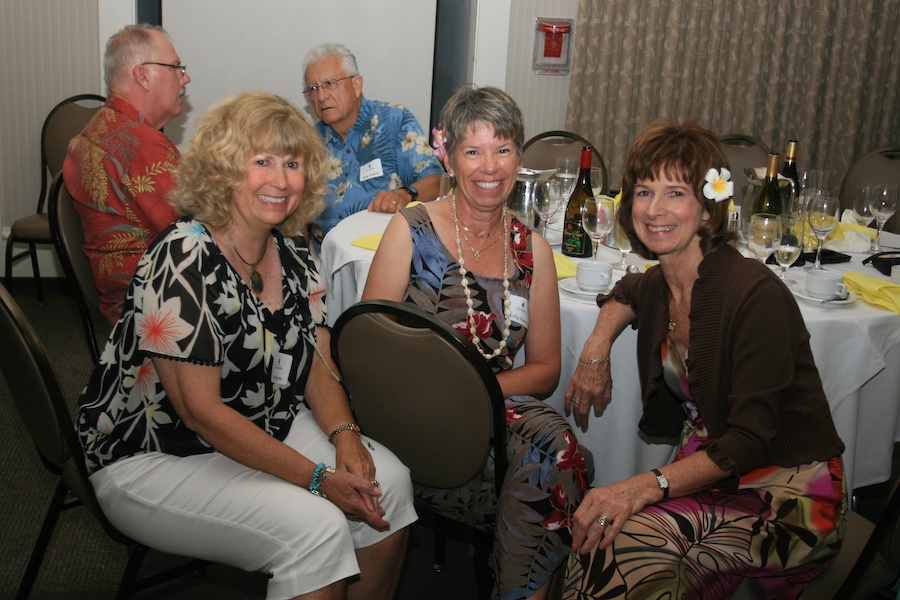
Serious vonversations underway

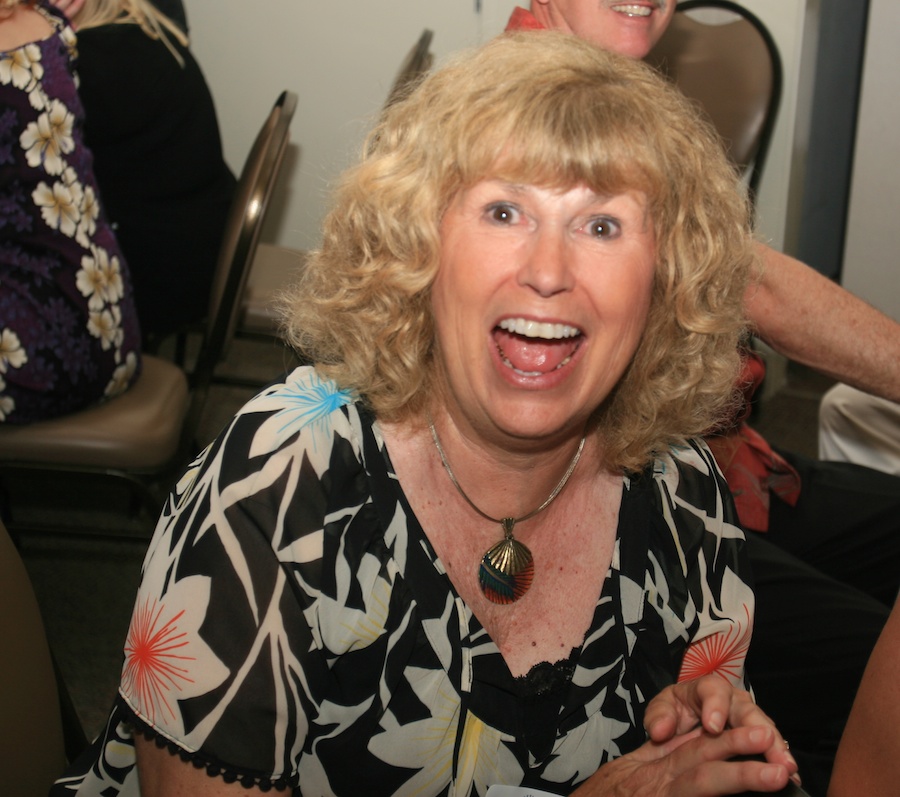
"Nope... We will NOT post this picture also!"
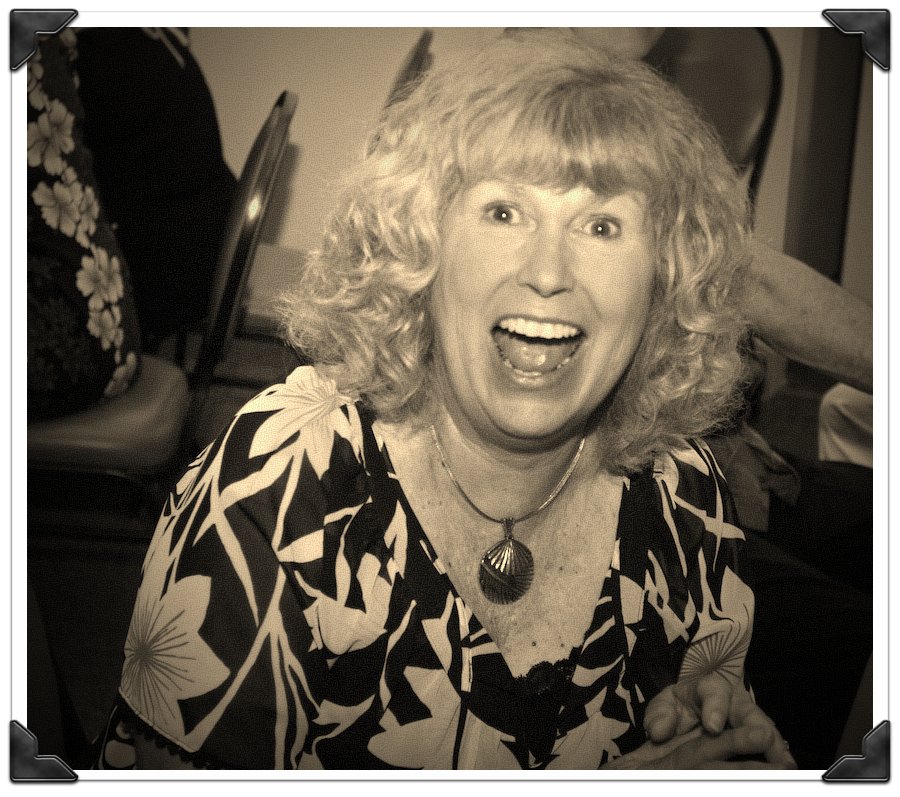
How it will be remembered in a few years...


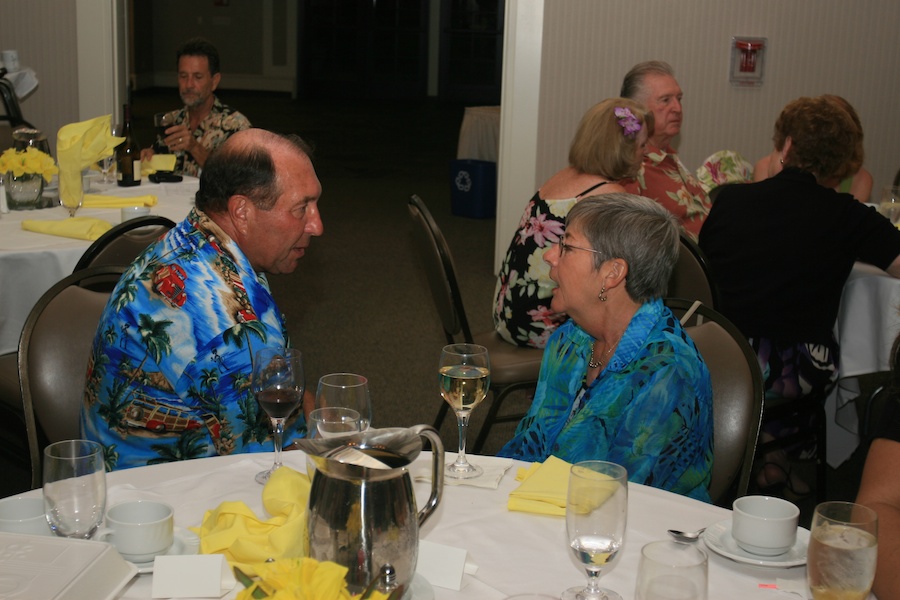
They got the memo about blue
Did You Know? - The modern Aloha shirt was devised in the early 1930s by Chinese merchant Ellery Chun of King-Smith Clothiers and Dry Goods, a store in Waikiki. Chun began sewing brightly colored shirts for tourists out of old kimono fabrics he had leftover in stock. The Honolulu Advertiser newspaper was quick to coin the term Aloha shirt to describe Chun's fashionable creation. Chun trademarked the name.
The first advertisement in the Honolulu Advertiser for Chun's Aloha shirt was published on June 28, 1935. Local residents, especially surfers, and tourists descended on Chun's store and bought every shirt he had. Within years, major designer labels sprung up all over Hawaii and began manufacturing and selling Aloha shirts en masse. Retail chains in Hawaii, including mainland based ones, may mass produce a single aloha shirt design for employee uniforms.
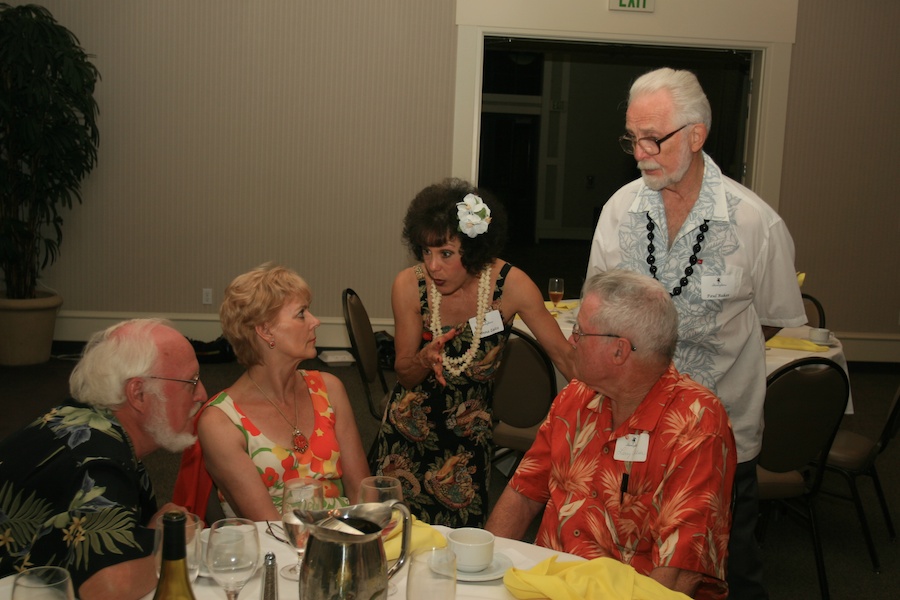
Donna talks about the Wine Train


The giggle department

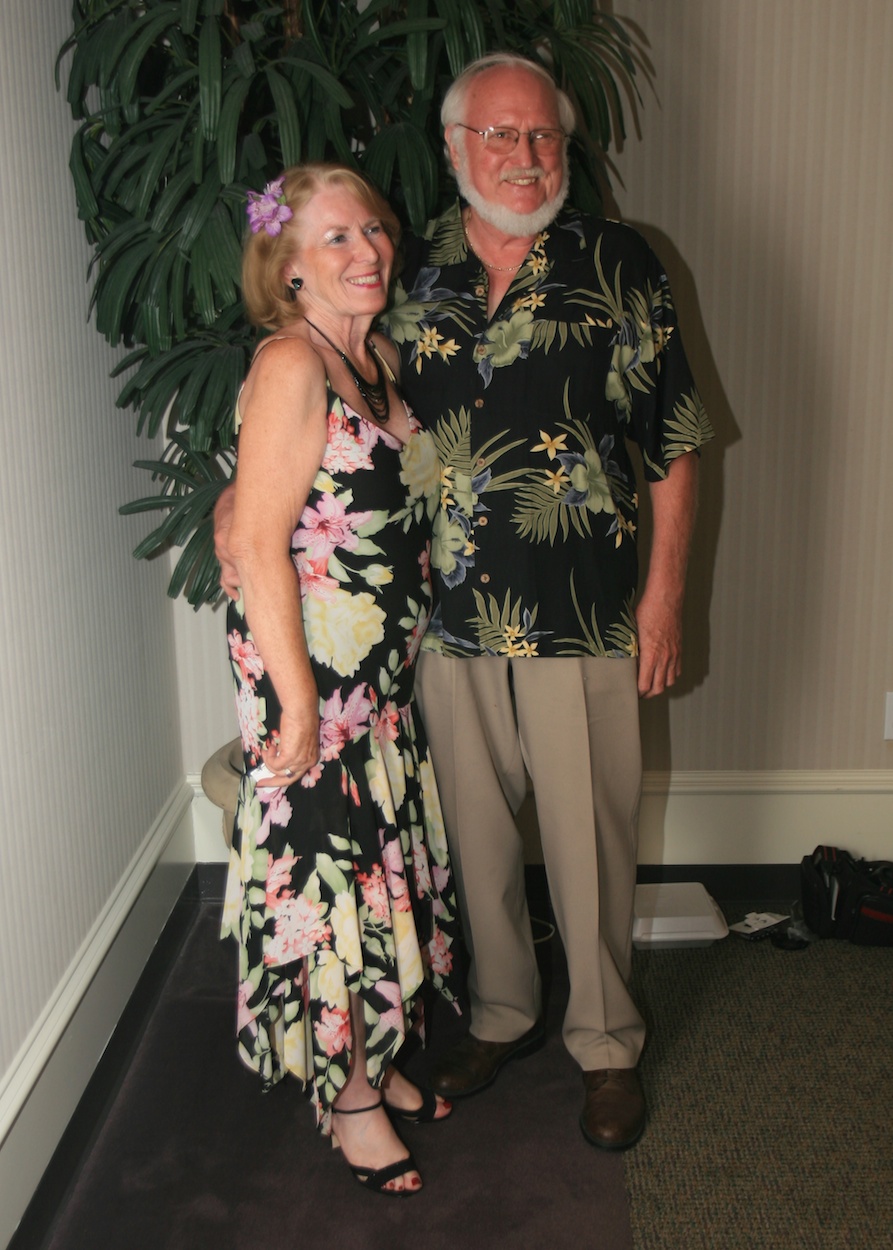
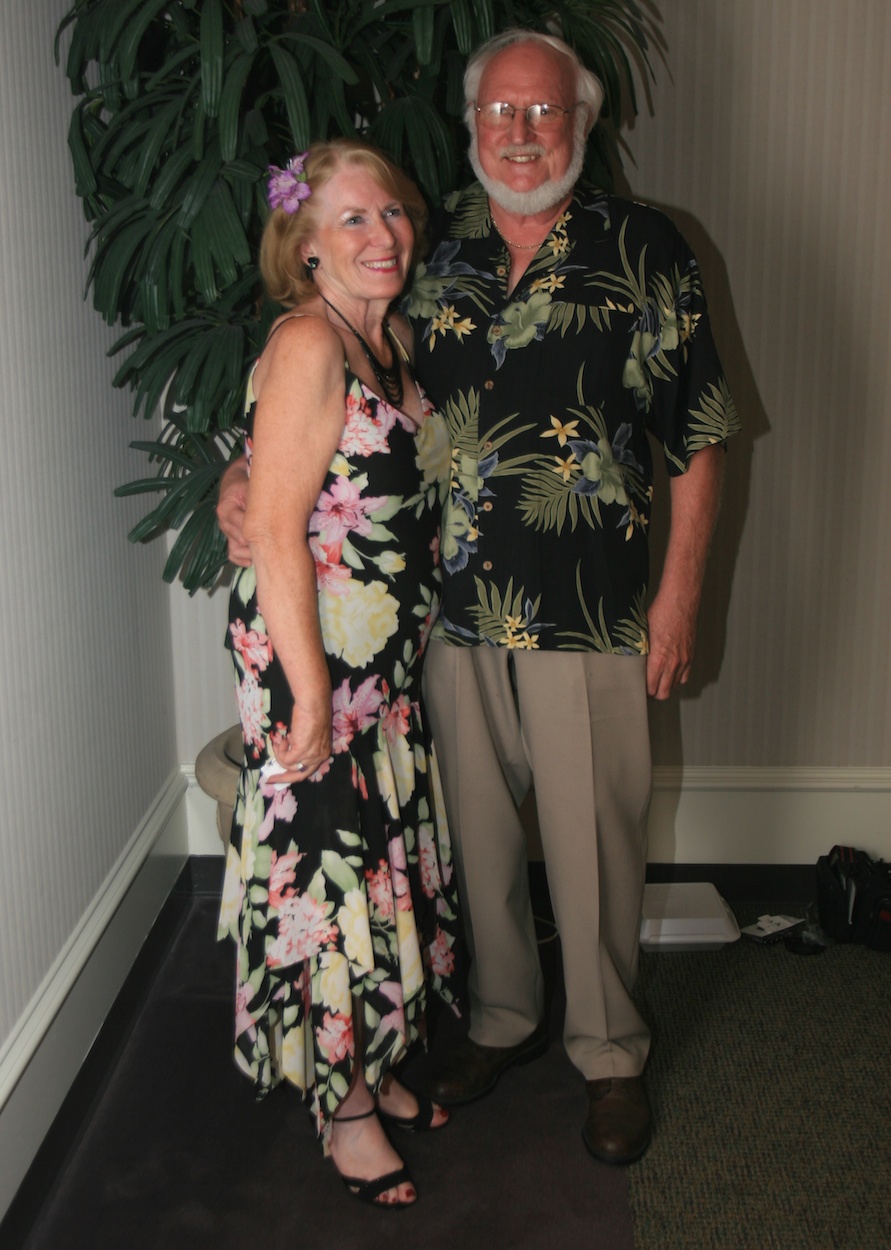

Whose Shoe Is Whose

Who is trading shows??
Did You Know? - Most of the lower class in ancient Egypt walked barefoot, but figures on murals dating from 3500 B.C. depict an early version of shoes worn mostly by the higher classes. These were leather pieces held together with lacing that was often arranged to look like the ankh symbol, which represents life. There are also some depictions of both upper-class males and females wearing heels, probably for ceremonial purposes.
Egyptian butchers also wore heels, to help them walk above the blood of dead beasts. In ancient Greece and Rome, platform sandals called kothorni, later known as buskins in the Renaissance, were shoes with high wood or cork soles that were popular particularly among actors who would wear shoes of different heights to indicate varying social status or importance of characters.

No one will step on these puppies

M-m-m-m-m-m Don't ask... Don't tell
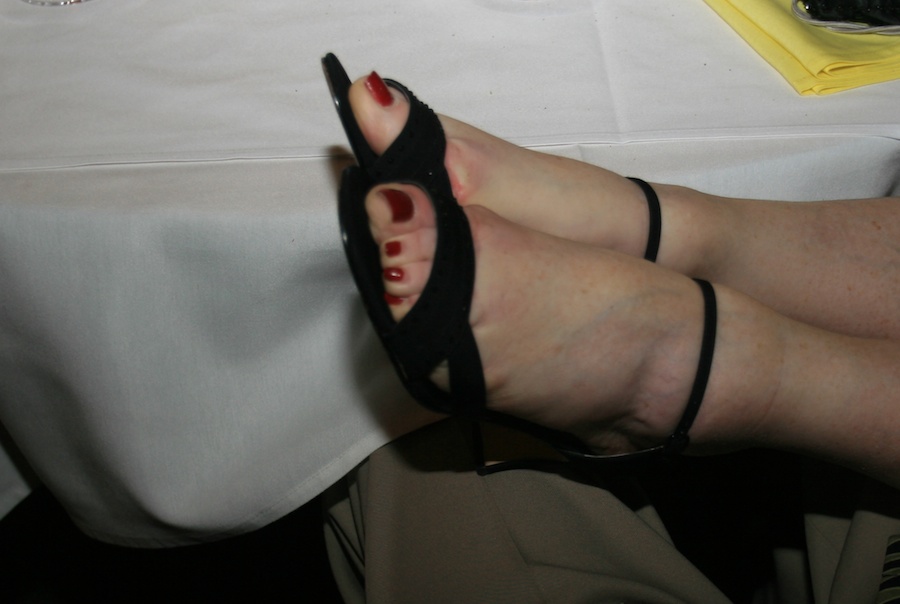
Whose are these???
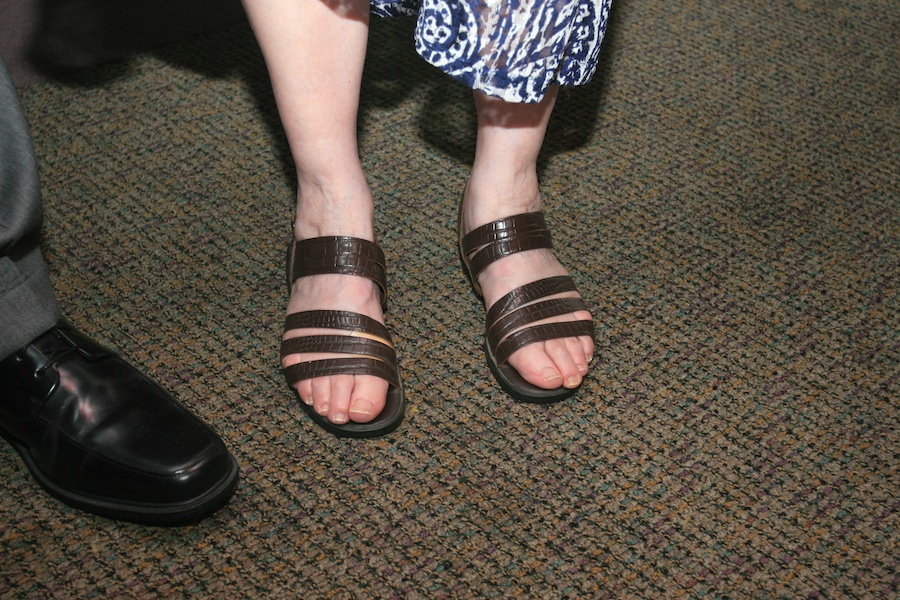
Comfort?

Could be worse

Great HAwaiian colors

For getting around fast


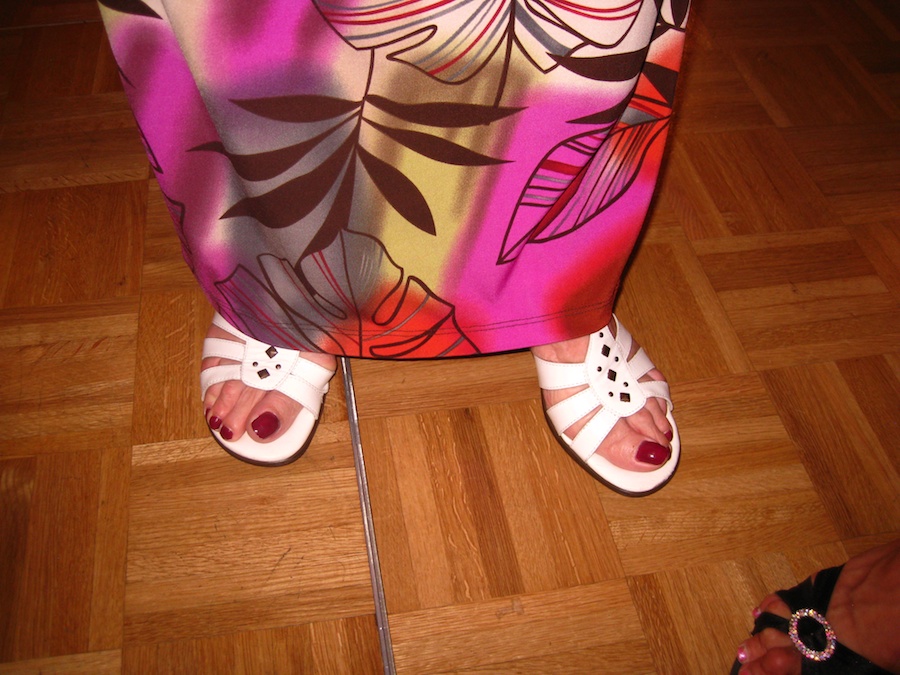


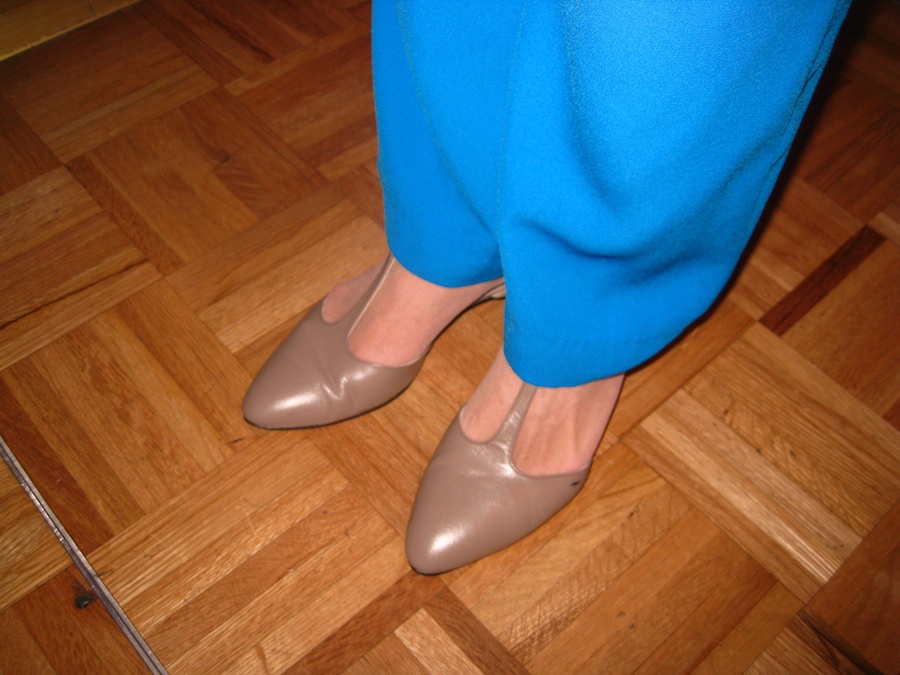
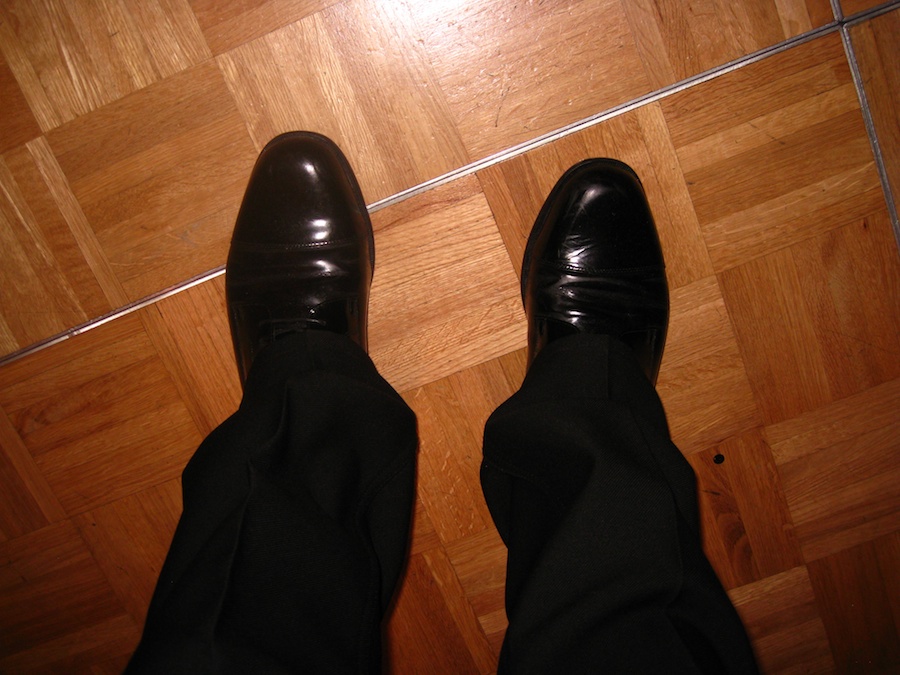





" OK, who drank the champagne?? "
Back To The Danc
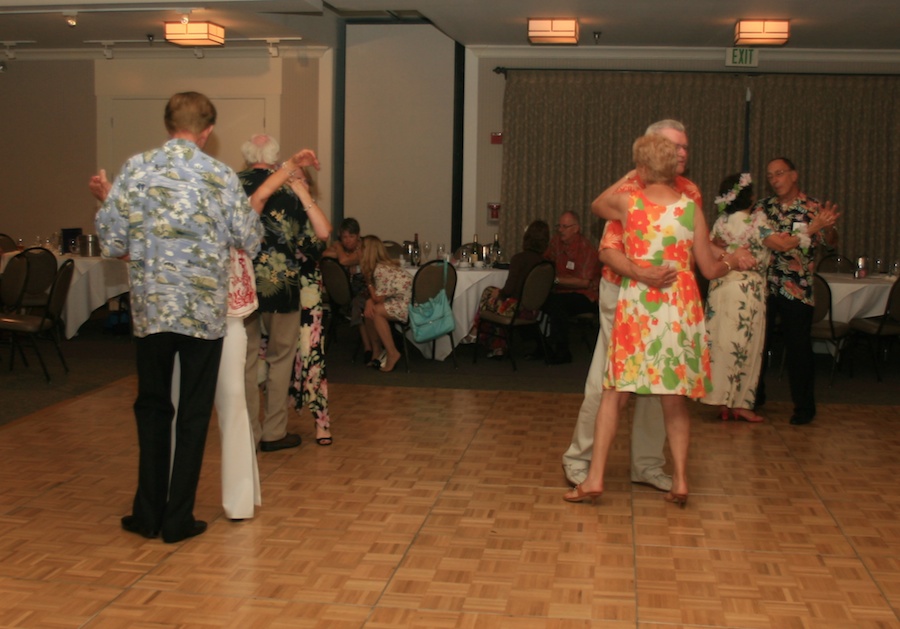

Leon decided to propose again....

The collected center pieces
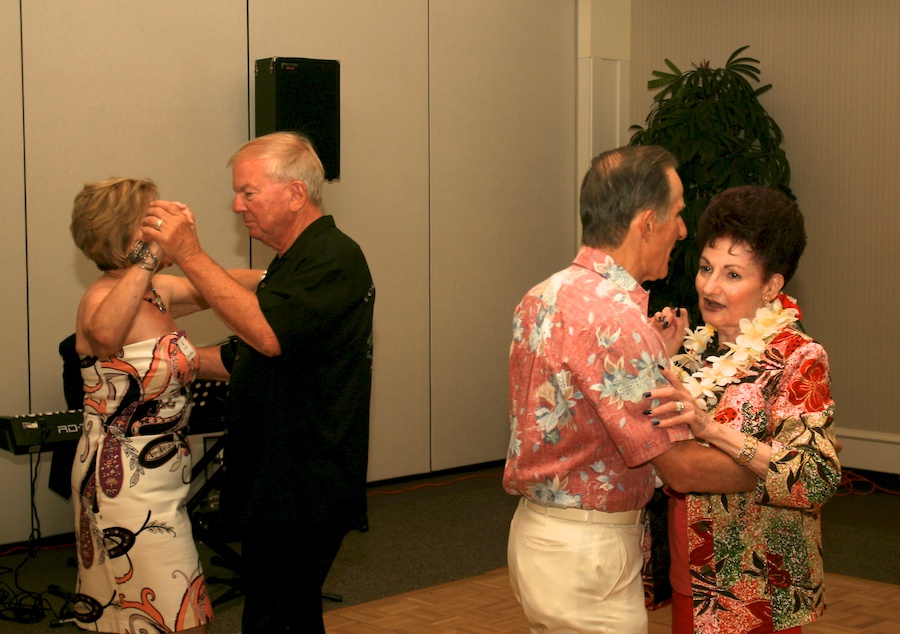
B & B - Bellows and Brander

It's getting late
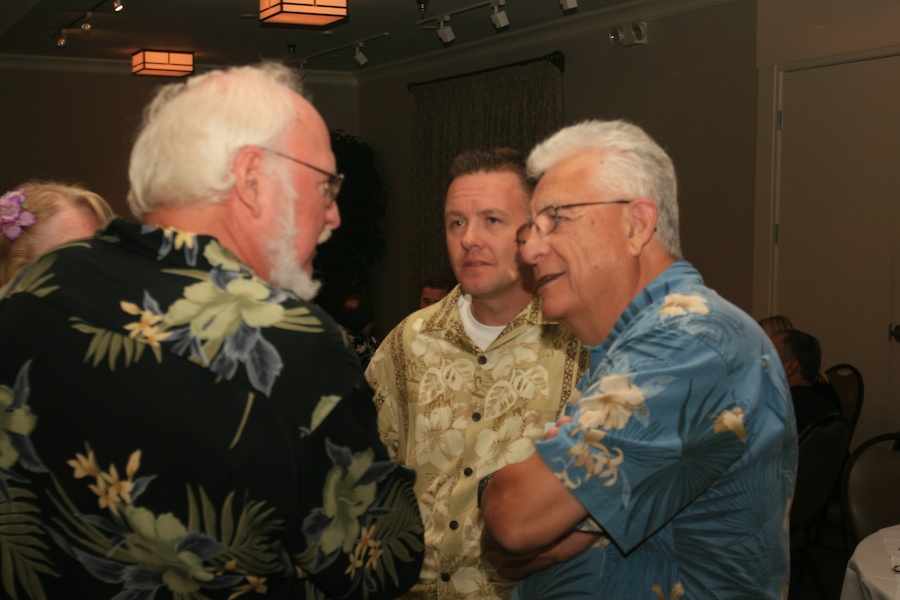
The chatting continues

"
Great evening youse all "
